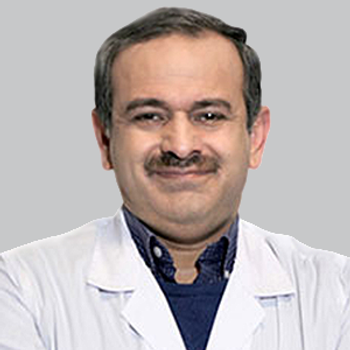
Practice Pearls for the Management of Multiple Sclerosis
Experts in neurology share practice pearls to optimize the treatment for patients with multiple sclerosis.
Episodes in this series

Stephen Krieger, MD: To take what you just said about reserve and plasticity, we do have unmet needs for the patients we have now. You all have mentioned quite a number of ways trying to boost brain reserve and cognitive reserve, from addressing sleep, and mood, and diet, and optimizing their disease-modifying therapies. You’ve also spoken about trying to have particular sort of rehabilitative strategies that you draw from, the cognitive profiling that you’re doing. And I think that those are all ways of trying to tailor the treatment paradigm, not just the disease-modifying therapy, but all of it is to boost reserve, boost brain health, and change the trajectory of the disease. And, in particular, for our topic today, think about insidious cognitive dysfunction. How we can recognize that, characterize it, monitor it, and ultimately treat that for people with this disease? I think this has been a terrific conversation about a lot of facets about multiple sclerosis. I want to thank all of you for your contributions. Before we stop, maybe I can get a final punchline from each one of you, what you think is sort of a takeaway, from our conversation. Dr Nelson, maybe we can start with you? Final concluding thoughts?
Flavia Nelson, MD: I would say education. Educate your patients about how important it is to take care of themselves, in a holistic way. And for them to understand that everything they do now is going to play a role in how they progress or their disease scores and the healthier they are, the better outcomes they’re going to have.
Stephen Krieger, MD: I think you are quite right. I would say something similar, that we’re not treating the person that’s in front of us right now, we’re treating their future self and trying to protect that future self. Which is intuitive for us, but it’s not always obvious to our patients. And I think that resonates with things that all of you have said. Thus, trying to optimize things now for brain health to treat their future self. That’s what I’ve been trying to do, and I think it s] a useful message. Dr Nicholas, closing thoughts from you?
Jacqueline Nicholas, MD: Yes, I couldn’t agree more with what’s already been said. Again, I would just not only talk about the education of the patient upfront, but that real impact of treating that patient with MS [multiple sclerosis] early with an effective treatment for their MS is key. Because we don’t have treatments to fight cognition outside of managing symptoms. And hence, overall preventing other co-morbid diseases and treating MS effectively from day one.
Stephen Krieger, MD: Perfect. And Dr Crayton, you get the final word.
Heidi Crayton, MD: I echo what everybody has said. And lastly, I think we’re all incredibly grateful to your model of neurological reserve. That changed the way that we thought about cognition. The way that we thought about that mismatch between imaging and what we see in the clinic. And that was a clinical game changer for you to have helped us understand the unseen, the intangibles, and optimizing. That’s when the conversation escalated about neurological reserve. And we heard Dr Nelson referring to languages and music, and building pathways, and exercise. And those things are always kind of secondary things until your model came out. And I think that we finally had something tangible to start thinking about. Thus, I think we’re all very grateful to you for kind of bringing that to the forefront.
Stephen Krieger, MD: Well, I appreciate your mentioning it. I would say, the concept of reserve has a lot of authors and proponents. And James Sumowski, PhD, at Mount Sinai, we talked about his work, and our center now has really kind of fleshed out that idea. The topographical model itself is a way of trying to pull together a lot of the things we’ve talked about here.
Heidi Crayton, MD: It makes sense, though.
Stephen Krieger, MD: Yes, where the lesions are, and where the atrophy is, and how that’s going to personalize the disease. I appreciate your saying that. Well, thank you. And I want to thank our viewing audience for joining this NeurologyLive® Peer Exchange. We hope you found this to be a useful and informative program. Thank you for joining us.
Transcript Edited for Clarity
Newsletter
Keep your finger on the pulse of neurology—subscribe to NeurologyLive for expert interviews, new data, and breakthrough treatment updates.


































